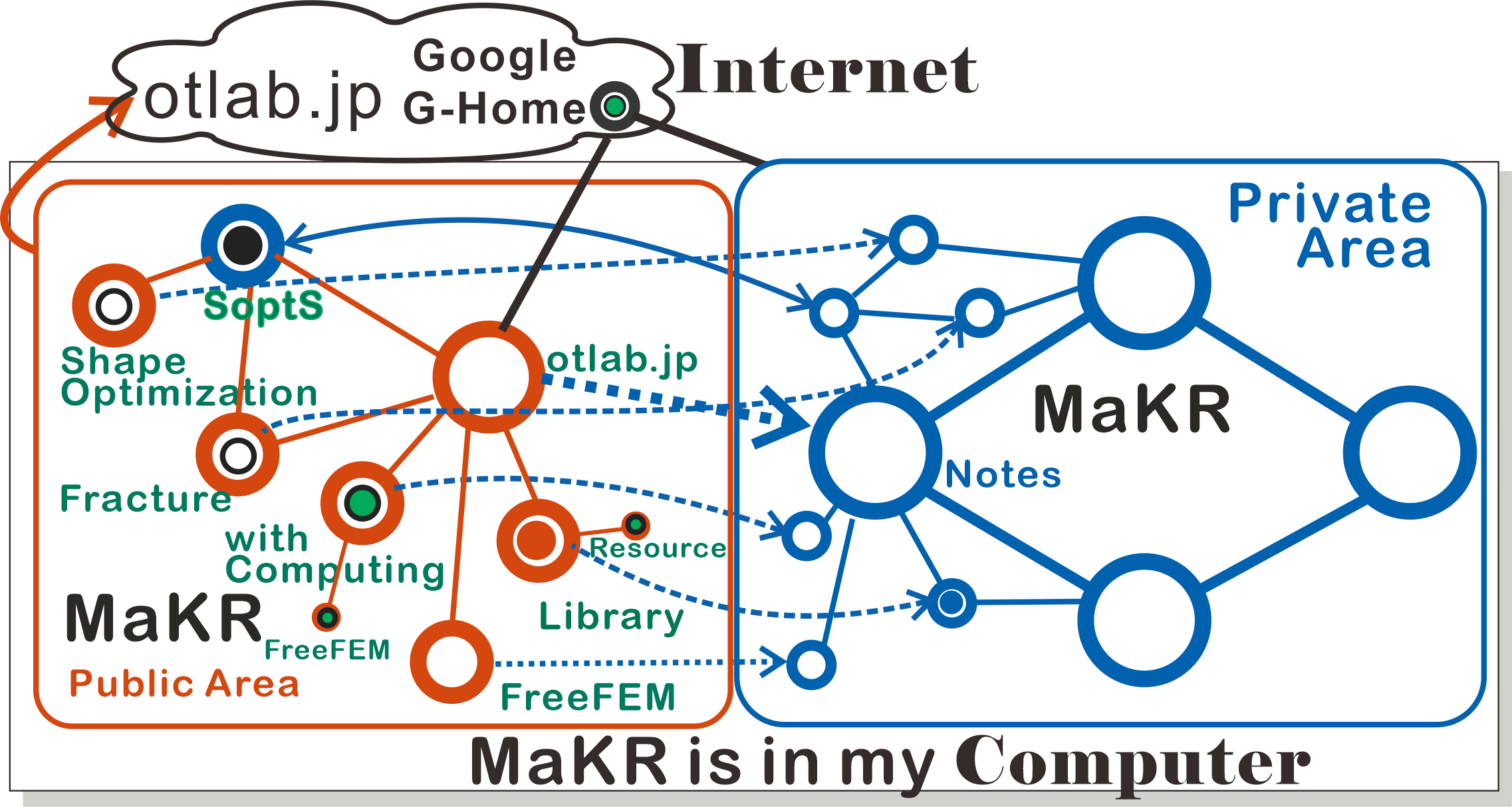The page is the Interface to the Applied Math in private
Aim
SoptS, which is interested in natural phenomena and artificial objects, can be considered as applied mathematics. In the past, the practical applications have motivated the development of mathematical theory, for example, Calculus was created for Newtonian mechanics and Fourier analysis arose from the study of Fourier's heat conduction equation, which became the subject of research in pure mathematics. SoptS is also closely related to the singularity of solutions of PDEs.
Applicable mathematics
The topic SoptS includes various areas of research, such as fracture problems and shape optimisation problems under various phenomena. in boundary value problems for PDEs. also refer to Continuum Mechanics . Most studies of singularities in PDEs are quite difficult because they are asymptotic expansions of singular terms. A goal of SoptS is to use numerical calculations to study the properties of singularities without obtaining asymptotic expansions.
Richard L. Courant is the father of finite elements method.
Information about the page: The current position is non-black filled circle circle in the diagram below. Blue is the Applied Math in private and orange is a duplicate for public use, where dashed line means the intrface to the Applied Math in private.
